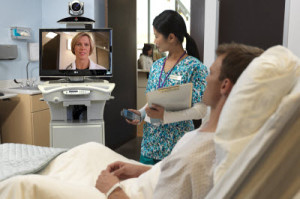Telemedicine: Fostering in A New Era of Doctor’s Housecalls
Telemedicine: Fostering in A New Era of Doctor’s Housecalls
The concept of telemedicine is anything but new. Doctors have been advising, prescribing, and consulting over the telephone for more than one hundred years, and more recently, using videoconferencing. What has changed is the political and economic climate in which medicine exists.
The emphasis today is to deliver quality healthcare to every segment of the population no matter what conditions they suffer, where they live, or how much they can afford to spend; all this while endeavoring to keep costs down. In an interview with Frost & Sullivan, Jonathan Linkous, CEO of the American Telemedicine Association explains how the adoption of telemedicine can meet these objectives.
While the doctors of yesteryear all made house calls, modern medical practices and technology dictate bringing patients to doctors, but Linkous believes the flow is about to be reversed, pointing out that 32 state legislatures have introduced bills to allow telemedicine. The benefit to government at both the state and federal level is a reduction of healthcare costs since the aging population and those with chronic conditions, who might otherwise end up in the hospital or ER can be better served by remaining in their homes with medical personnel monitoring and advising them remotely.
As various sectors of the medical field consider how telemedicine can fit their needs, new terms are springing up. Psychiatrists, social workers, and healthcare insurers are developing ways to apply tele-mental health. Hospitals that cannot afford full-time pharmacists, and remote rural areas that cannot attract pharmacists see tele-pharmacy as a way for patients to stay current on their medications.
Linkous estimates that over 10 million Americans were served by telemedicine last year alone, and the number is bound to grow as today’s phenomena of connectivity gives patients the ability to monitor conditions such as diabetes and high blood pressure via consumer-generated devices, and send them to physicians. This in turn has given rise to a flurry of research and development leading to innovative telemedical cameras and software that will allow them to be incorporated into Electrical Medical Records. It looks like telemedicine is here to stay.
M3 will be discussing telemedicine solutions from industry leaders like Polycom and Cisco in upcoming posts in this blog series.








